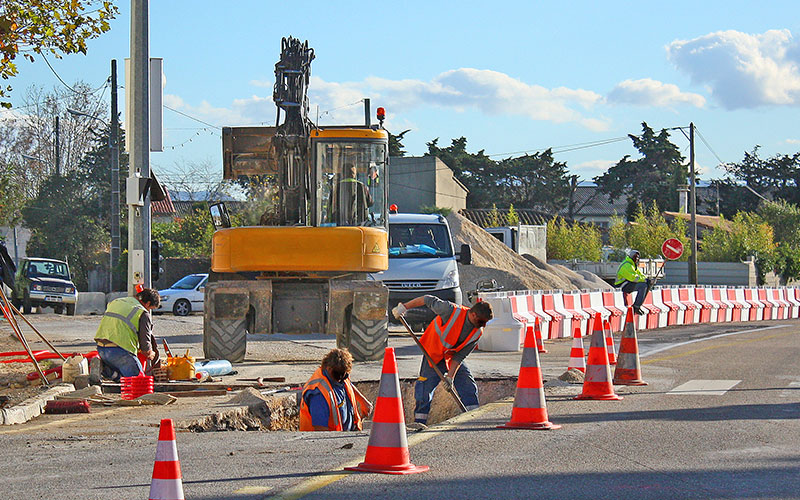1. Be an asset management Champion!
One common thread in all organizations that have made progress is that someone, or a group, needs to step up to get asset management moving. It doesn’t matter if you are a staff member, a manager, or elected official, it’s happened many different ways across many different communities. Someone needs to step up. Someone needs to begin to understand what this looks like for your organization. Someone needs to start talking about it. Someone needs to make the management team aware if they aren’t already. Asset management is a journey for the organization, it consists of incremental steps towards formalising and optimizing what you are already doing, and it might start with you.
2. Build the AM Network/Committee in your organization
Identify who needs to be at the table. Asset management is a multi-disciplinary approach involving a variety of functions from your organization. You may need to bring together staff that have never worked together before, create open communication between departments, and forge new working relationships.
“This isn’t a one person project. We established a working group of staff from different departments to make sure everyone is contributing. We have shared ownership of the asset management program, and we shared the load across the working group. Anyone can write an AMP report, but the working group helps move our AM practice forward.”
Travis Rob, Manager of Operations and Facilities, Fort Frances, Ont.
Start an asset management network or committee, get together and talk about what asset management can do and what you might try. Build awareness in the organization and start the cultural change and different way of thinking. Discuss how the different departments can share information to make better more collaborative decisions.
3. Understand your current capabilities, what are you already doing?
It is useful to understand your organization’s maturity level with regards to asset management. This isn’t brand new and you are already doing some of this.

An assessment will give you a baseline of your current state, from which you can assess your gaps, and areas, which you might want to improve. You can then prioritize your improvements in short, medium, and long-term efforts, knowing that you can’t change everything at once. Try to identify areas of the organization that are having success. Look to leverage that success by collaborating with areas that need improvement and would benefit from learning what processes work best.
FCM has produced an Asset Management Readiness Scale, which is available here, but there are other assessment tools out there.
“This isn’t a one person project. We established a working group of staff from different departments to make sure everyone is contributing. We have shared ownership of the asset management program, and we shared the load across the working group. Anyone can write an AMP report, but the working group helps move our AM practice forward.”
Travis Rob, Manager of Operations and Facilities, Fort Frances, Ont.
Start an asset management network or committee, get together and talk about what asset management can do and what you might try. Build awareness in the organization and start the cultural change and different way of thinking. Discuss how the different departments can share information to make better more collaborative decisions.
4. Start planning your organization’s journey
This isn’t going to happen overnight. Put a long term, realistic plan in place, and monitor your progress. You need to look at this as an incremental culture change within your organization. Don’t think of asset management as a one-off project or program. Think about it as moving towards evidence-based decision-making considering risks, service levels, investment requirements, and sustainability.
“Asset management isn’t a capital project like building a bridge. It’s a change in perception and way of working.”
Gordon Duff, Treasurer and Deputy CAO, Town of Minto, Ont.

Use your Gap Assessment to start drafting an ‘Asset Management Roadmap’ to plan out what you will focus on improving over the next one, three, or five years. Keep it simple, and give yourself time. This will not happen overnight.
“It can be overwhelming to look at the asset management system as a whole. Pick small projects and initiatives that will support you getting where you want to go. Pick areas where people are already working to help with some easy wins to get the ball rolling.”
Scott Quinn, Engineering and Public Works Manager, County of Kings, N.S.
You should revisit your roadmap to check in on progress and make it more advanced as part of your continuous improvement cycle after a year or longer. Over time you can get more advanced and more refined with your processes, delivering better value to your customers through more effective and efficient decisions, seeing more and more value and benefits as you progress.

What challenges will we face in doing this?
For most communities, you will face a number of common challenges in your asset management journeys, regardless of your size:
- You likely don’t have dedicated staff to focus on asset management efforts;
- You don’t have all the data or information you need to move forward;
- You have more infrastructure deficit than you can financially resolve;
- You have demands from citizens which are not always aligned with your recommendations; and
- You have elected officials with four-year terms such that visions may change with a significant election.
You have to understand that asset management is a way of doing things. You will be looking at changing the way people do things. This isn’t easy, and you will face challenges, but keep going, connect with your peers, make incremental changes, and things will get easier.
“Asset management can be a tough sell in a small municipality with limited staff and many competing priorities. It’s important to create a culture that understands the value of asset management. When you are able to show the organization the valuable information made available through asset management, it becomes something staff and departments can truly appreciate and buy into.”
Jeffrey Morrison, Director, Corporate Services, Town of Essex, Ont

“We’re still a rather large organization but we’ve made a lot of achievements in tearing down silos. When you’ve made a lot of progress, sometimes you have to step back and say, have we dropped anything along the way? This has to do with data and process, but also people and skills.”
Bradley Leeman, Director of Lifecycle Management, City of Edmonton, Alta.
Your Asset Management Roadmap, and the list of things you need to change in the organization to make progress on asset management, will be very broad. It’s not a linear or prescriptive journey that you need to follow, and different journeys work for different organizations. There is no right or wrong way.

